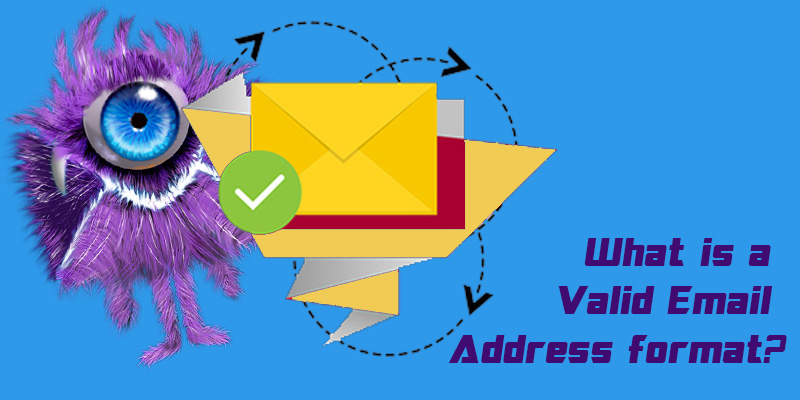When you want to use any email platform, you need a valid email address so that you can use that platform. Without that, it would be invalid.
Now you must be thinking about the question here that, what are the factors that show the email address is valid. Generally, a compelling valid email address characters consist of an email prefix and valid email domains, both in acceptable formats. The prefix appears to the left of the @ symbol, and the domain appears to the right of the @ symbol.
Without this, email domains are not valid.
Valid email address format
A valid email address consists of an email prefix and an email domain, both in acceptable formats.
The prefix appears to the left of the @ symbol.
The domain appears to the right of the @ symbol.
For example, in the address example@mail.com, “example” is the email prefix, and “mail.com” is the email domain.
Acceptable email prefix formats
- Allowed characters: letters (a-z), numbers, underscores, periods, and dashes.
- An underscore, period, or dash must be followed by one or more letter or number
| Invalid email prefixes: | Valid email prefixes: |
|---|---|
| abc-@mail.com | abc-d@mail.com |
| abc..def@mail.com | abc.def@mail.com |
| .abc@mail.com | abc@mail.com |
| abc#def@mail.com | abc_def@mail.com |
Acceptable email domain formats
- Allowed characters: letters, numbers, dashes.
- The last portion of the domain must be at least two characters, for example: .com, .org, .cc
| Invalid email domains: | Valid email domains: |
|---|---|
| abc.def@mail.c | abc.def@mail.cc |
| abc.def@mail#archive.com | abc.def@mail-archive.com |
| abc.def@mail | abc.def@mail.org |
| abc.def@mail..com | abc.def@mail.com |
Email Address Formatting
While a basic email address consists of only a username and domain name, most email clients and webmail systems include names with email addresses. An email address that contains a name is formatted with the name first, followed by the email address enclosed in angle brackets, as shown below.
Full Name <user@domain.com>
Email can be sent to recipients with or without a name next to the email address. However, emails sent to addresses that include a name are less likely to be filtered as spam. Therefore, it is a good idea to fill in your full name when setting up an email account. Most mail clients and webmail systems will automatically include your name in your sending email address.
Avoid some special characters, Role addresses & Spam traps
Due to the way many programmers set up mail systems, there are certain characters to be avoided in the local-part of an address for the sake of safety. Commas, asterisks, carets, and apostrophes have the potential to confuse email systems and render a message undeliverable. Typically, users won’t have to worry about this, as many email providers won’t let them use these characters in a username in the first place.
Role addresses are not assigned to a single person but to an entire department at a company, such as info@company or sales@company. You’d think that this means your message is sent to each person in that company’s department. In reality, it’s more than likely that the account is manned by a single person– or a few people– who screen emails and determine their relevance. Open rates may be lower than usual, so it’s best to leave these addresses alone.
The wily inboxes may be real, but their purpose is to catch spammers in the act. Set up using valid, active email servers and designed to avoid detection, spam traps have a sleeper effect on your campaign– which is to say, you won’t know you’re taking a hit until it’s too late.
An email verification service such as MailMonster is a reliable way to find spam traps. Typically, you won’t realize that anything is wrong on your own.

